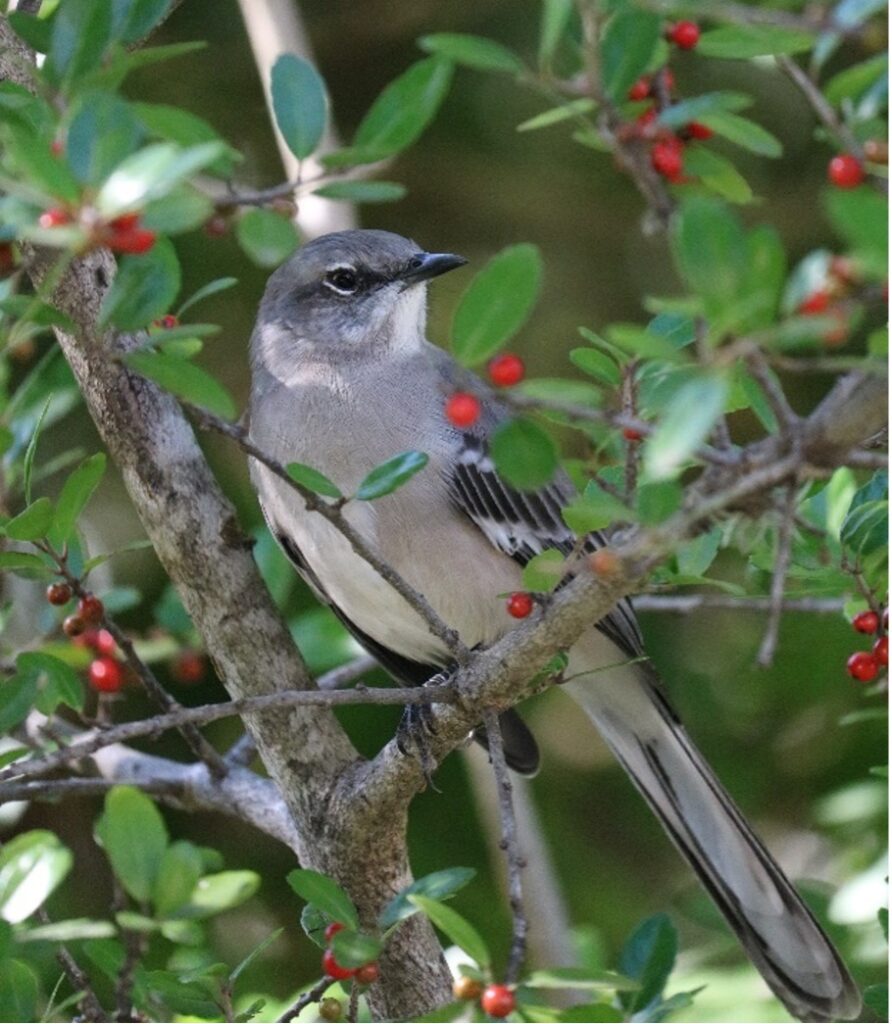A Northern mockingbird guards Yaupon Holly berries at the River Authority Main Office.
All eyes were on birds last week, as enthusiasts around the Unites States completed the annual Christmas Bird Count, culminating in the celebration of National Bird Day on January 5th! We’re fortunate to have a great diversity of birds that live within the San Antonio River Basin year-round or temporarily pass through during their annual journeys between northern breeding grounds and southern wintering grounds.
The San Antonio River Basin is usually pretty comfortable during the winter months compared to other locations along the continent. Many birds spend their winters here as they wait for warm weather to return to their breeding grounds, which could be as far as Alaska or northern Canada! Alternately, and despite the intense heat here, some birds spend their summers in this area, where they attempt to breed and raise young. Still, other birds only pass through and temporarily stop in our area during their annual spring or fall migrations. Regardless of how much time they spend here or what time of year it occurs, birds have specific habitat needs.
Bird and pollinator-friendly native landscape at the River Authority Main Office
what can i do to help birds?
Birds share the same basic needs as humans, including water, food, and shelter. Local native plants can provide natural food sources and protection. We can use them to create beneficial habitats for birds in our spaces. In addition to providing food and shelter for birds, local native plants can be incorporated into landscapes of all sizes, offering many benefits to humans and healthy ecosystems.
Just like people, different birds like different foods! The best way to support birds is by providing a diversity of natural food sources in the landscape that remain available throughout the year. A simple way to provide food for birds is to plant local, native perennials, shrubs, vines, and trees that offer seeds, nectar, berries, and other sources of nutrition.
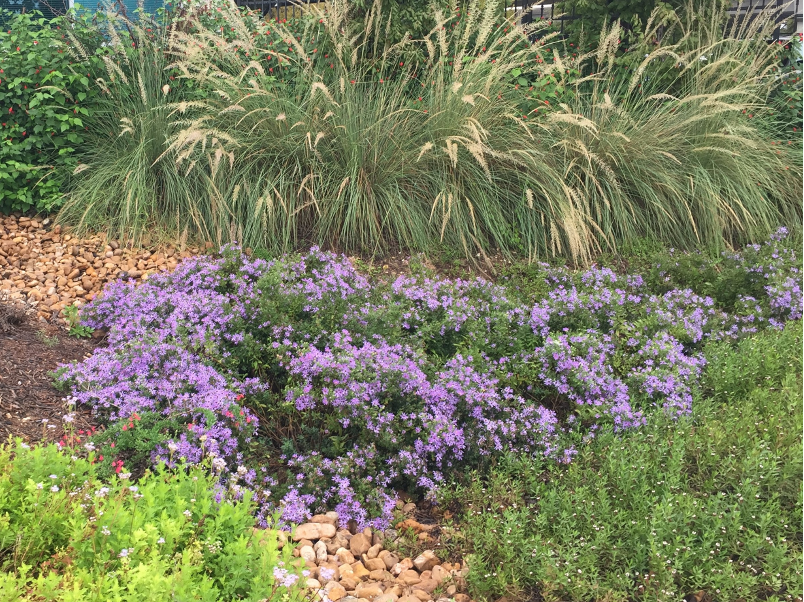
Bird and pollinator-friendly native landscape at the River Authority Environmental Center
For example, in 2013, the River Authority began making simple landscape changes that benefit birds at the Environmental Center and Main Office locations in downtown San Antonio. Since converting these landscapes, we’ve seen them serve as crucial urban habitat islands because of our chosen plants. Birds, butterflies, and many different pollinators are regular visitors that benefit from our landscape choices and sustainable maintenance practices.
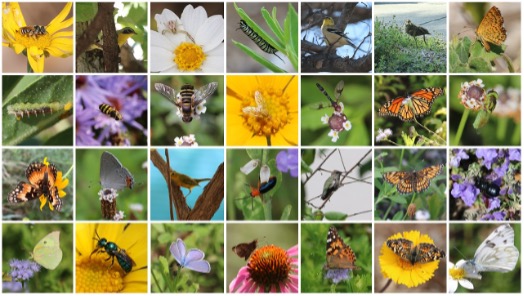
A sampling of bird and pollinator biodiversity seen in the native landscape at the River Authority Environmental Center
Many people are surprised to learn that the conversion from the previously lifeless, lawn-dominated landscapes into the now ornamental, native landscapes full of life have reduced maintenance requirements for our facilities. By simply making thoughtful plant selections at each location, we’ve created attractive landscapes that cost less to maintain and serve as habitat oases for wildlife.
You, too, can help celebrate and support birds by providing local native plants in your space-whether that’s a balcony, yard, community park, or another area. There are many ornamental native plants available in local nurseries, and some of the best local native plants known to help birds are listed below.
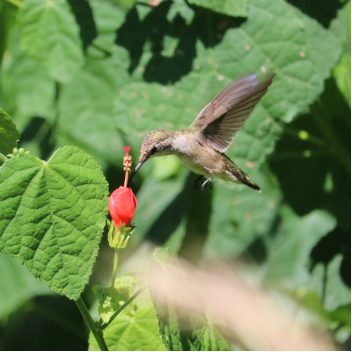
Hummingbird getting nectar while pollinating Turkscap in a local native garden
Hummingbird favorites:
- Autumn Sage (Salvia greggii)
- Coral Honeysuckle (Lonicera sempervirens)
- Flame Acanthus (Anisacanthus quadrifidus var. wrightii)
- Turkscap (Malvaviscus arboreus var. drummondii)
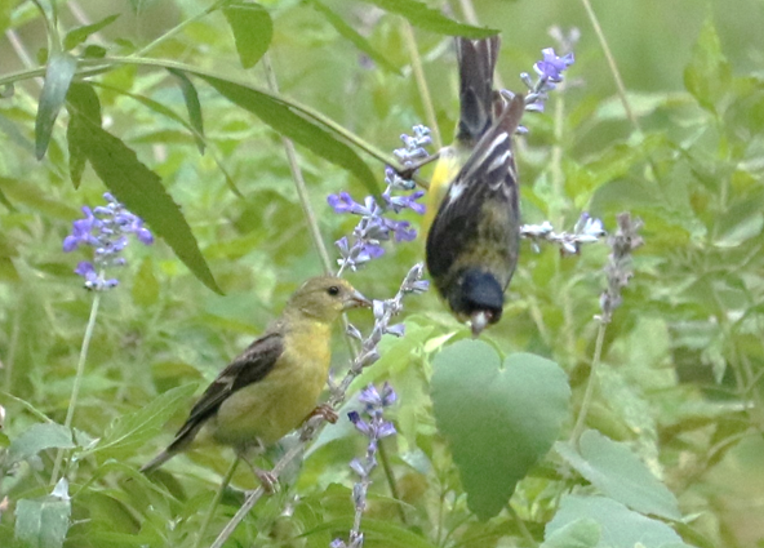
A pair of Lesser Goldfinches eating seeds of Mealy Blue Sage in a local native garden
Flowering perennials loved by seed-eating birds:
- Common Sunflower (Helianthus annuus)
- Engelmann’s Daisy (Engelmannia peristenia)
- Mealy Blue Sage (Salvia farinacea)
- Zexmenia (Wedelia acapulcensis var. hispida)
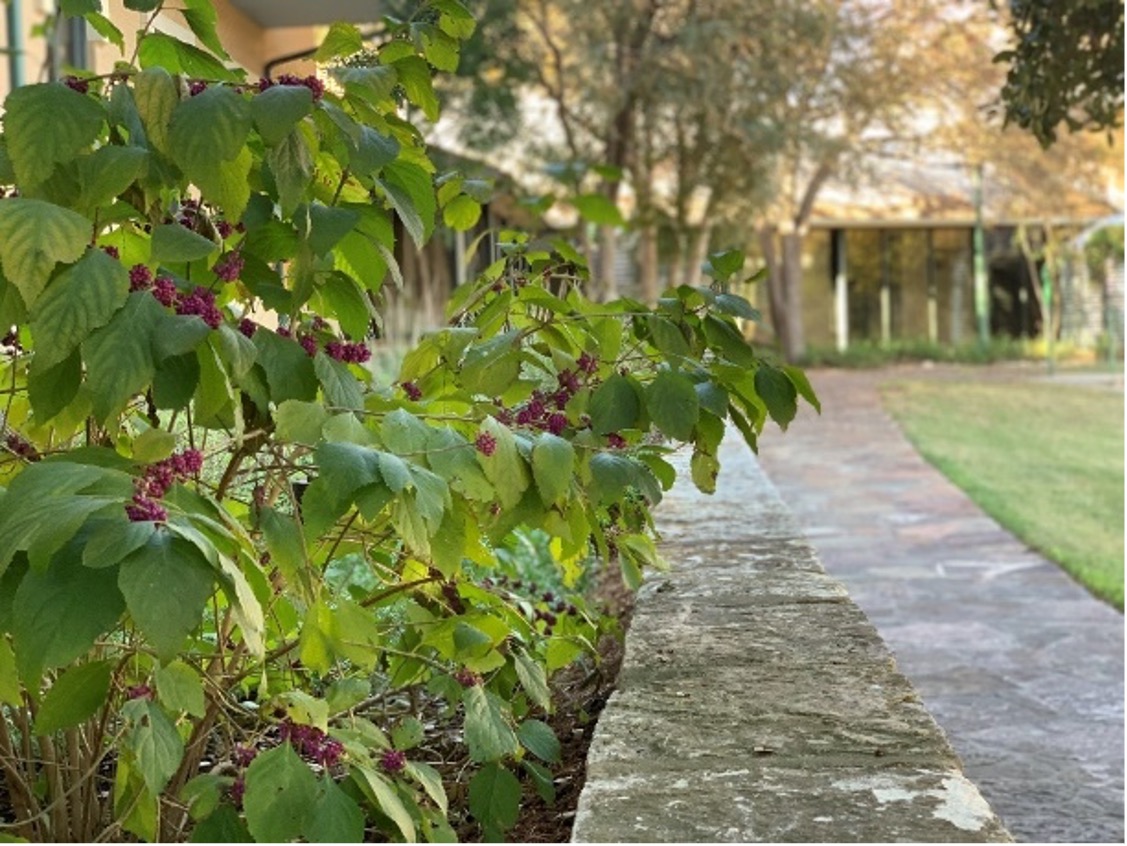
American Beautyberry covered in berries at the River Authority Main Office
Fruit-producing shrubs and trees loved by birds:
- Agarita (Mahonia trifoliolata)
- American Beautyberry (Callicarpa americana)
- Mexican Plum (Prunus mexicana)
- Yaupon Holly (Ilex vomitoria)
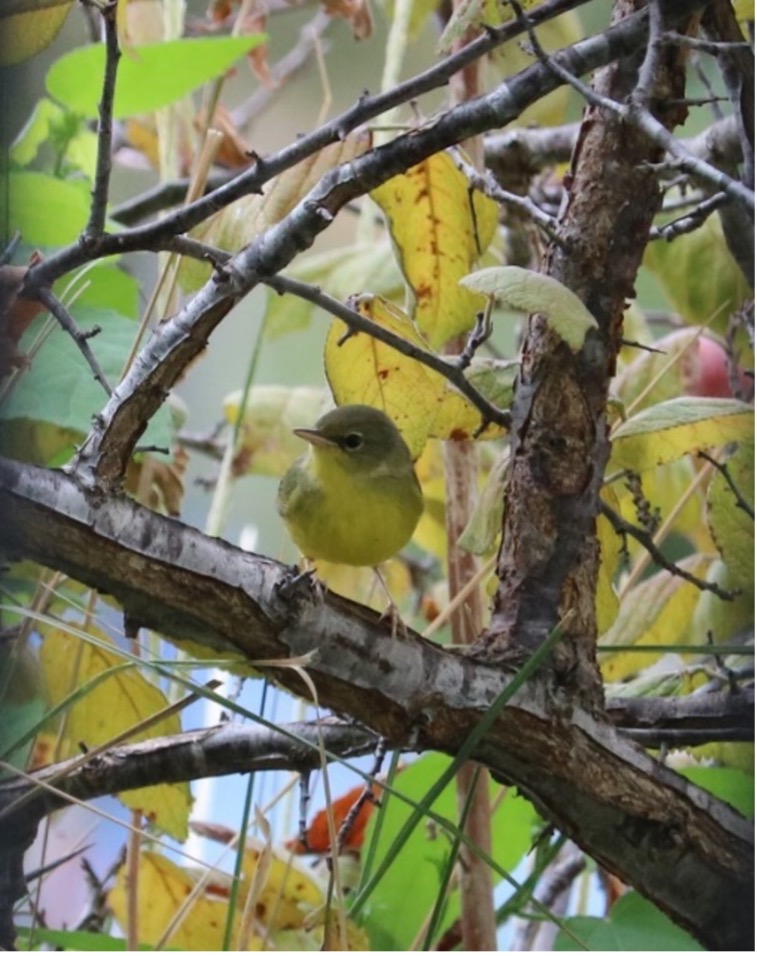
Mourning warbler resting on Mexican Plum at the River Authority Environmental Center during its fall migration
The plants listed above and over a hundred more local native plant species were planted along the San Antonio River as part of the Mission Reach Ecosystem Restoration and Recreation Project. These plants have provided stability and resiliency for the river ecosystem and served as critical habitats for a wide variety of birds through the years.
Over 200 unique bird species have been recorded actively using the restored river habitat, including some unusual and surprising finds. Discover more about birds along the San Antonio River Mission Reach here.
Using local native species in your landscape is an act of stewardship that benefits us all. Whether it’s just one plant in a pot or one hundred plants in the ground, local native plant species offer the best benefits for birds and other wildlife. For more information on local native plants, see the San Antonio Area Plant List provided by the Native Plant Society of Texas here.

